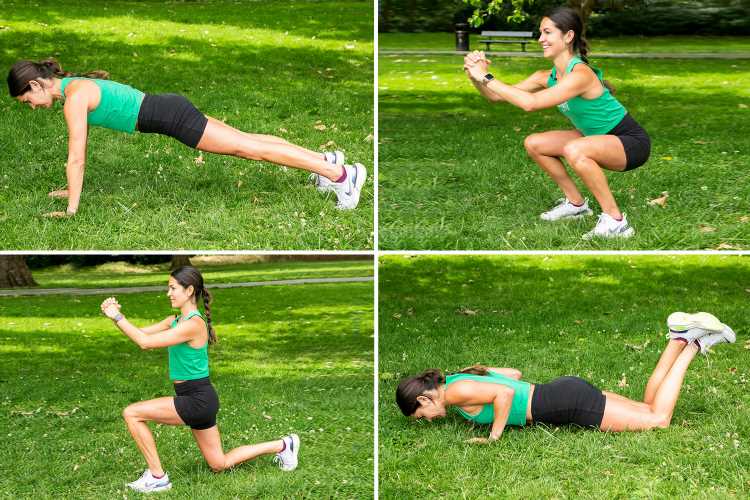TODAY is World Heart Day, a time to reflect on whether you are looking after your ticker.
One of the leading drivers of worsening or poor heart health is high blood pressure.

High blood pressure is the third biggest risk factor for all diseases in the UK, after smoking and poor diet, according to the charity Blood Pressure UK.
One in three Brits have high blood pressure, also known as hypertension, and an estimated 5 million are undiagnosed – clueless to the threat they face.
The condition causes the heart to have to work harder to pump blood around the body.
And this can lead to a number of potentially deadly consequences, including stroke and heart attack.
Read more on blood pressure
 EAT UP
EAT UP
Dr Michael Mosley says superfood 'works like Viagra and slashes heart attack risk'
 HEALTH ALERT
HEALTH ALERT
Warning to millions with high blood pressure when taking naps over killer risk
Research published in the British Journal of Sports Medicine suggested that ‘still’ or isometric exercises are the best for lowering blood pressure.
The fascinating study looked at all the available data from 270 clinical trials involving a total of around 15,287 patients from 1990 to 2023.
I’m a personal trainer and isometric exercise essentially involves muscle engagement, without muscles or joints moving.
You’re basically holding a position, and forcing your muscles to contract to keep you stable in that position.
Most read in Health
 JABS ALERT
JABS ALERT
Warning to parents as 1 in 10 kids at risk of deadly Victorian diseases
 SCHOOL’S OUT
SCHOOL’S OUT
New Covid fears after school is forced to close after surge in Pirola cases
 WEIGH HEY
WEIGH HEY
I was so fat I went blind after secret McDonald’s – I’ve lost 7st eating curry
 ON A HIGH
ON A HIGH
Popular habit gives a ‘natural high just like cannabis’, says Dr Michael Mosley
This doesn’t mean these exercises are easy. In fact, your muscles are contracting throughout the entire move, without a break, so if anything, although they are static exercises, your muscles are working overtime to ensure you stay still.
Increasing the time that muscles are under tension is also a great way to grow and strengthen muscles.
The study also looked at other forms of exercise – cardio workouts, weightlifting and high intensity interval training (HIIT).
And isometric exercise still came out top, 98 per cent effective at lowering systolic blood pressure.
Workouts that involved a mix of weight-training and cardio were 76 per cent effective followed by weightlifting (46 per cent), cardio (40.5 per cent) and HIIT (39 per cent).
Systolic blood pressure is the pressure in your arteries when your heart beats, compared with diastolic pressure, which is the pressure when your heart rests between beats.
Jamie O’Driscoll, a reader in cardiovascular physiology at Canterbury Christ Church university and senior author of the report, told the BBC that isometric exercises place a very different stress on the body to aerobic exercise.
He said: “They increase the tension in the muscles when held for two minutes, then cause a sudden rush of blood when you relax. This increases the blood flow, but you must remember to breathe."
So how, exactly, can you do isometric exercises?
For each exericse, hold for the recommended amount of time, rest for 30 seconds, then repeat twice more before moving on to the next one.
1. Plank
Lie down flat on the floor, face down. Push yourself up and rest your body on your forearms and toes. Your shoulders should be stacked above your elbows and your body should be in a straight line. Squeeze your core muscles to ensure you stay stable, and hold for 20 seconds.
STEP IT UP: For some added resistance, which will force your muscles to work harder, ask a friend or relative to place a flat, weighted item on your back.

2. Wall sit
Stand against a wall, facing away from the wall. Slide down until your thighs are parallel to the ground.
Step your feet out so that your knees are at a right angle. Press your back into the wall and stay here for 20 seconds.
STEP IT UP: To make this harder, place a weighted item in your lap. This could be a dumbbell or a couple of heavy hardback books.
3. Low squat hold
For the ultimate leg burn, drop down into a squat hold.
Your feet should be just wider than shoulder-width apart with toes pointing out slightly.
Keep a flat back and gaze forward as you bend the knees and push your hips back, to drop into a squat. Stay as low as you can and hold for 20 seconds.
STEP IT UP: To make your low squat a little harder, hold a dumbbell or weighted item out in front of you.

4. Split squat hold
Stand tall and take a wide stance with the left leg in front of the other.
Keep a flat back and gaze forward as you bend both knees and drop down into a lunge position.
Your front knee should be stacked above your front ankle; you may need to reposition your stance slightly. Your back knee should be hovering above the ground.
Hold this position for 20 seconds, before switching sides.
STEP IT UP: For extra resistance and an added arm workout, hold a dumbbell or weight up overhead with straight arms.

5. Push up hold
In a high plank position, with palms directly under your shoulders and your body resting on your toes, gently bend the elbows and lower your chest down to the ground.
When your chest is close to the floor, pause and hold for 10 to 20 seconds. Drop down to your knees to make this exercise easier.
STEP IT UP: A push-up hold is no easy move!
But if you need more of a challenge, try to lower your body closer to the ground, and bend your elbows behind you, keeping your arms tucked close to your body.

6. Dead hang
A lot harder than it looks, a dead hang involves hanging off a bar or even a high door frame.
Grip onto the bar and let your body hang down, ensuring your feet are off the floor either by tucking your knees up slightly or lifting your legs up behind you. Stay here for 20 seconds.
STEP IT UP: Accelerate your dead hang by tucking your knees up to your stomach. Here, you’re activating the core muscles and giving your midsection even more of a workout.
7. Hollow body hold
A great isometric move to work your core, start by lying flat on the ground, facing up with your arms straight behind the head.
Keeping your legs straight and close together, gently lift the legs, arms, shoulders and upper torso off the ground. Hold this position for 20 seconds.
From the side, your body should be in a curved, banana shape position.
STEP IT UP: Lower your legs so they’re just hovering above the ground. You can lower your torso closer to the ground too.
8. Glute bridge hold
This isometric move is great for working the butt muscles.
Lie on the ground face-up with knees bent and feet flat on the floor. Your arms should be down by your side with palms facing down.
READ MORE SUN STORIES
 MUMBELIEVABLE
MUMBELIEVABLE
Woman, 32 & mum, 63, bought the same Primark outfits to see how they look
 CO-STAR CLASH
CO-STAR CLASH
MAFS star Georges makes brutal dig at Porscha as he calls rival‘pathetic’
Squeeze your butt muscles as you lift your hips off the floor so your back and thighs are in one straight line. Hold this for 20 seconds.
STEP IT UP: To increase the tension in your glute bridge, hold a weight over your hip bone for added resistance.
More ways to lower your blood pressure
- Get puffed out
Factor in some resistance-based cardio workouts. How about walking with ankle or wrist weights? Or adding an incline on the treadmill and walking with a backpack?
Cardio with weights was found to be the second most effective exercise for lowering blood pressure.
2. Bye, bye salt
Processed foods can contain high amounts of sodium, so try and stick to natural foods where possible.
Love throwing salt on your meals? Take it off the table so you’re not tempted to get salty at dinner.
3. Banana drama
Foods high in potassium such as bananas, leafy greens, apricots, tuna and beans, could help to lower blood pressure.
The mineral potassium helps the body get rid of sodium (salt) and ease any pressure on your blood vessels.
The National Institutes of Health said: “According to an extensive body of literature, low potassium intakes increase the risk of hypertension, especially when combined with high sodium intakes.
“Higher potassium intakes, in contrast, may help decrease blood pressure.”
4. Take a stand
Sat at a desk all day? Set an alarm to get up every hour and move; go and make a coffee, chat to a colleague or get outside for a brisk walk.
The British Heart Foundation say that those who sit for long periods of time have been found to have higher rates of cardiovascular disease.
Source: Read Full Article



